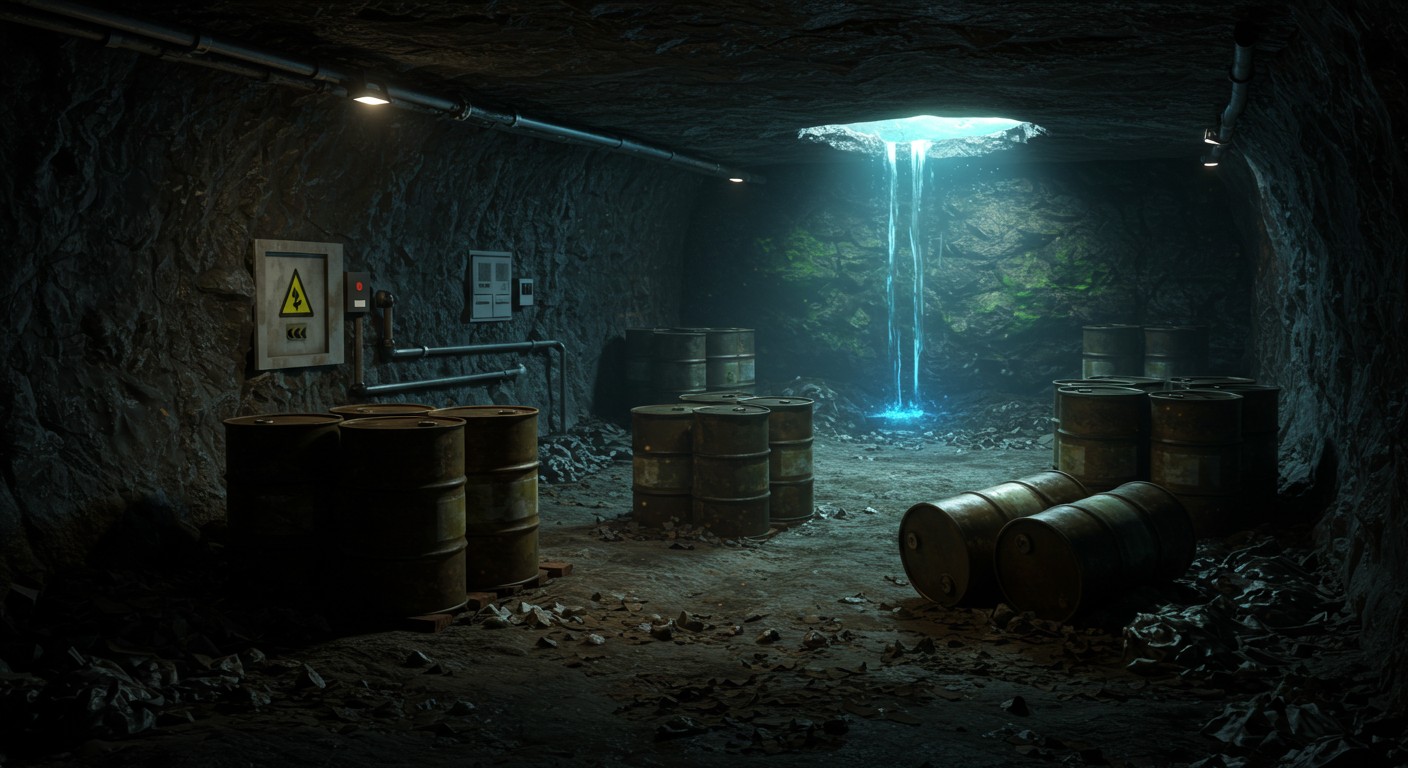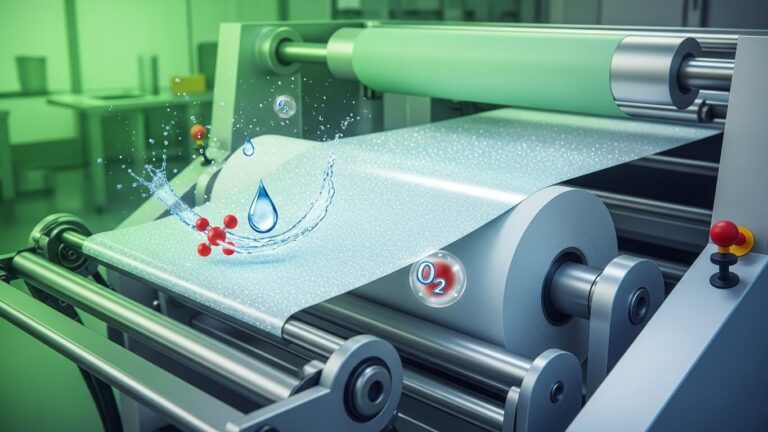
Stocamine : Déchets Toxiques Confinés
Qu’advient-il lorsque 42 000 tonnes de déchets dangereux, enfouis à plus de 500 mètres sous terre, deviennent l’objet d’un bras de fer entre écologistes, élus locaux et autorités judiciaires ?', 'Imaginez une ancienne mine de potasse transformée en tombeau pour des substances aussi toxiques que l’arsenic ou l’amiante. À Wittelsheim, en Alsace, le site de Stocamine incarne ce dilemme écologique, où la sécurité environnementale et les contraintes techniques s’entrechoquent. Cette décision récente du tribunal administratif de Strasbourg, autorisant le confinement définitif de ces déchets, ravive un débat qui dure depuis plus de vingt ans.
Stocamine : Une Mine, un Défi Écologique
Le site de Stocamine, situé dans le Haut-Rhin, n’a pas toujours été un sujet de controverse. Initialement, cette ancienne mine de potasse, exploitée jusqu’en 1997, a été reconvertie en un centre de stockage pour déchets toxiques. Entre 1999 et 2002, des milliers de tonnes de substances dangereuses y ont été enfouies, dans l’espoir d’une solution sécurisée pour l’environnement. Mais ce projet, porté par les Mines de Potasse d’Alsace (MDPA), a rapidement soulevé des inquiétudes, notamment en raison des risques de pollution de la nappe phréatique alsacienne, une ressource essentielle pour la région.
Pourquoi ce site pose-t-il problème ? Les déchets, stockés à grande profondeur, sont difficiles à extraire sans risquer des fuites ou des contaminations. Les opposants, dont la Collectivité européenne d’Alsace (CEA) et des associations comme Alsace Nature, plaident pour un déstockage, même partiel, afin de préserver l’environnement. Cependant彼此
Le déstockage est techniquement risqué et pourrait aggraver la /*#__
Ce verdict, bien que basé suffered a setback, with the rejection of the demands for reversibility by environmental groups and local authorities, highlights the complexity of the issue. The court emphasized that robotic technologies, proposed by some as a solution for safe waste removal, are insufficient for the complex task of extracting hazardous materials from such depths. This ruling prioritizes worker safety and environmental protection over the feasibility of waste retrieval.
Despite the technical challenges, the decision has not quelled the concerns of local stakeholders. The CEA, alongside environmental groups, has been vocal about the long-term risks to the Alsatian aquifer, a critical water resource. The fear is that corrosion in the mine’s infrastructure could lead to leaks, compromising this vital ecosystem.
Les Arguments des Opposants
Opponents of the confinement, including local elected officials and environmental organizations, argue that leaving the waste in place is not a sustainable solution. Their primary concerns include:
- Potential contamination of the Alsatian aquifer, a key water source for the region.
- Long-term environmental risks due to degrading infrastructure, such as corroded well casings.
- The need for a reversible storage solution to allow future waste retrieval if technology advances.
These groups, led by figures like Frédéric Bierry of the CEA, have pushed for independent studies to explore decontamination options. A recent initiative by the CEA, involving an expert from the Aix Court of Appeal and a hydraulic engineer, aims to reassess the feasibility of waste extraction, with results expected by summer 2025.
Les Défis Techniques du Déstockage
Removing 42,000 tonnes of hazardous waste from a depth of over 500 meters is no small feat. The tribunal’s ruling highlighted several technical obstacles:
- Safety risks to workers due to the unstable mine structure.
- Limited applicability of robotic technologies for complex extraction tasks.
- Potential for environmental contamination during the extraction process.
These challenges have fueled the argument for permanent confinement, as the risks of extraction are deemed too high. However, critics argue that confinement is a temporary fix, leaving future generations to deal with potential leaks.
L’État s’appuie sur des études répétées pour justifier que, dans deux years, intervention on the site will become impossible.
– Stéphane Giraud, Directeur d’Alsace NatureUne Saga Juridique et Politique
The Stocamine saga is not just a technical issue but a deeply political one. For over two decades, the site has been a flashpoint for tensions between the French state, the sole shareholder of MDPA, and local communities. The recent ruling is seen as a victory for the state’s confinement strategy, but local leaders, including Senator Sabine Drexler, continue to challenge it.
In early 2025, Drexler and eight other Alsatian elected officials sent an open letter to the government, highlighting the corrosion of well casings and questioning the validity of studies conducted by the Institut national de l’environnement industriel et des risques (Ineris). These studies, presented during a 2023 public inquiry, were criticized for underestimating the risks to the aquifer.
The CEA has vowed to pursue further legal action, with a new appeal planned before the Nancy Administrative Court of Appeal. This ongoing battle underscores the broader question: should we prioritize short-term safety over long-term environmental risks?
Vers un Nouveau Recours
The fight is far from over. Frédéric Bierry, president of the CEA, sees the tribunal’s acknowledgment of the operator’s responsibility and the aquifer’s vulnerability as a step forward. However, he believes the ruling falls short of addressing the full scope of the issue.
The CEA’s independent study, expected to conclude in summer 2025, could provide new data to bolster their case. This study, conducted by experts in law and hydraulics, aims to challenge the narrative that confinement is the only viable option.
The outcome of this study could shape the next legal challenge, potentially redefining how France approaches hazardous waste management. For now, the confinement of Stocamine’s waste remains a contentious issue, with far-reaching implications for the region’s environmental future.
Les Enjeux pour l’Avenir
The Stocamine case is emblematic of broader challenges in environmental management. Balancing immediate safety concerns with long-term ecological impacts is a recurring theme in industrial waste disposal. The decision to confine the waste may stabilize the site for now, but it raises questions about intergenerational responsibility.
Could advancements in robotic technology or other innovations eventually make safe extraction feasible? The answer remains uncertain, but the debate underscores the need for sustainable solutions that don’t defer problems to future generations.
Alsace’s aquifer, one of the largest in Europe, supplies water to millions. Protecting it while managing hazardous waste is a delicate balancing act, one that requires both technical innovation and political will.
Le Rôle de l’Innovation
Innovation could hold the key to resolving the Stocamine dilemma. Advances in robotic systems or waste treatment technologies might one day allow for safer extraction methods. For now, such solutions remain limited, as the tribunal noted, but research continues.
Startups specializing in environmental technologies are exploring ways to handle hazardous waste more effectively. These include methods for neutralizing toxins or recycling materials, which could reduce reliance on deep storage solutions like Stocamine.
The challenge is to align these innovations with the practical realities of sites like Stocamine, where depth and infrastructure pose unique obstacles. Collaboration between startups, researchers, and policymakers will be crucial to finding viable alternatives.
Un Débat qui Dépasse Stocamine
The Stocamine controversy is more than a local issue; it reflects global challenges in managing hazardous waste. As industries grow, so does the volume of toxic byproducts, demanding solutions that are both safe and sustainable.
From nuclear waste to chemical byproducts, the question of how to store or neutralize dangerous materials is universal. Stocamine serves as a case study in the tension between immediate action and long-term planning.
The outcome of this case could set a precedent for how nations address similar sites. Will confinement remain the default, or will innovation pave the way for safer, more reversible solutions? Only time, and continued advocacy, will tell.
As the debate continues, one thing is clear: the decisions made today will shape the environmental legacy we leave for tomorrow. The Stocamine case is a reminder that ecological innovation must keep pace with industrial progress to protect vital resources like the Alsatian aquifer.









